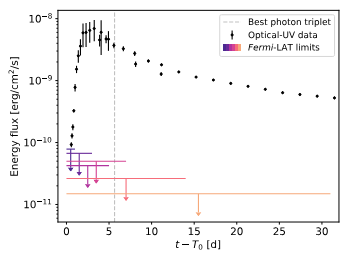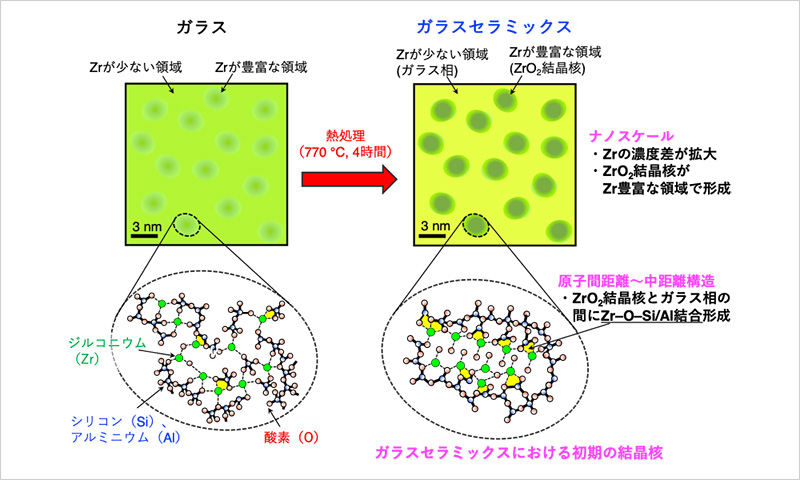2024-04-16 NASA
<関連情報>
- https://science.nasa.gov/missions/fermi/nasas-fermi-mission-sees-no-gamma-rays-from-nearby-supernova/
- https://arxiv.org/abs/2404.10487
フェルミ大望遠鏡によるコア崩壊型超新星2023ixfの宇宙線加速に関するガンマ線による初期制約 Early-time gamma-ray constraints on cosmic-ray acceleration in the core-collapse SN 2023ixf with the Fermi Large Area Telescope
G. Martí-Devesa, C. C. Cheung, N. Di Lalla, M. Renaud, G. Principe, N. Omodei, F. Acero
arXiv Submitted on:16 Apr 2024
DOI:https://doi.org/10.48550/arXiv.2404.10487

Abstract
While SNRs have been considered the most relevant Galactic CR accelerators for decades, CCSNe could accelerate particles during the earliest stages of their evolution and hence contribute to the CR energy budget in the Galaxy. Some SNRs have indeed been associated with TeV gamma-rays, yet proton acceleration efficiency during the early stages of an SN expansion remains mostly unconstrained. The multi-wavelength observation of SN 2023ixf, a Type II SN in the nearby galaxy M101, opens the possibility to constrain CR acceleration within a few days after the collapse of the RSG stellar progenitor. With this work, we intend to provide a phenomenological, quasi-model-independent constraint on the CR acceleration efficiency during this event at photon energies above 100 MeV. We performed a maximum-likelihood analysis of gamma-ray data from the Fermi Large Area Telescope up to one month after the SN explosion. We searched for high-energy emission from its expanding shock, and estimated the underlying hadronic CR energy reservoir assuming a power-law proton distribution consistent with standard diffusive shock acceleration. We do not find significant gamma-ray emission from SN 2023ixf. Nonetheless, our non-detection provides the first limit on the energy transferred to the population of hadronic CRs during the very early expansion of a CCSN. Under reasonable assumptions, our limits would imply a maximum efficiency on the CR acceleration of as low as 1%, which is inconsistent with the common estimate of 10% in generic SNe. However, this result is highly dependent on the assumed geometry of the circumstellar medium, and could be relaxed back to 10% by challenging spherical symmetry. A more sophisticated, inhomogeneous characterisation of the shock and the progenitor’s environment is required before establishing whether or not Type II SNe are indeed efficient CR accelerators at early times.



